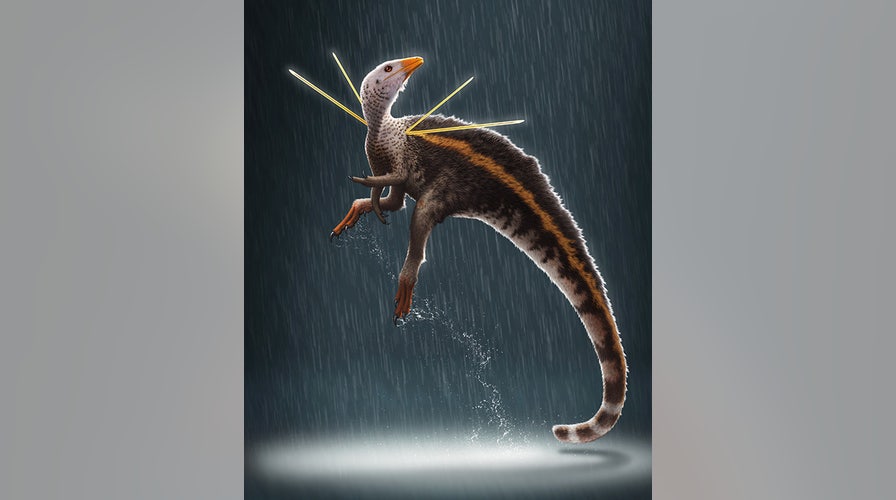Fox News Flash top headlines for December 16
Fox News Flash top headlines are here. Check out what's clicking on Foxnews.com.
A dinosaur the size of a chicken has been discovered that researchers say has features unlike anything seen before in the fossil record.
The ancient creature, known as Ubirajara jubatus, lived approximately 110 million years ago in modern-day Brazil, and it had a mane of long fur running down its back, with "stiff ribbons projecting out and back from its shoulders."
"What is especially unusual about the beast is the presence of two very long, probably stiff ribbons on either side of its shoulders that were probably used for display, for mate attraction, inter-male rivalry or to frighten off foe," the study's lead author, University of Portsmouth paleobiology professor David Martill, said in a statement.

Ubirajara jubatus is named after a Tupi Indian name for "lord of the spear," in reference to the creature’s stiffened, elongate integumentary structures, and jubatus from the Latin, meaning "maned" or "crested." (Bob Nicholls / Paleocreations.com 2020)
BIZARRE-LOOKING DINOSAUR LOOKS LIKE IT'S BEEN CROSSED WITH A WITH A PARROT
It's likely believed that this version of U. jubatus, which ate large insects and other creatures such as frogs and lizards, may have been a young male, Martill added. "Given its flamboyance, we can imagine that the dinosaur may have indulged in elaborate dancing to show off its display structures."
It's likely that the ribbons were made of keratin, the same substance that makes up hair and fingernails, which make it unlike any other creature ever discovered.
"We know lots of dinosaurs had bony crests, spines and frills that were probably used for display but we don’t see these very often in living birds. In birds, crests are made of feathers," the study's lead author, Robert Smyth, added in the statement. "This little dinosaur provides some insight into why this might be the case."
Smyth continued: "Bone requires a lot of energy for a body to grow and maintain, it’s also heavy and can cause serious injury if broken. Keratin – the material that makes up hair, feathers and scales – is a much better display alternative for a small animal like this one. Keratin is less costly for a body to produce, it’s also lightweight, flexible and can be regularly replaced if damaged."
The research was published in the scientific journal Cretaceous Research.
T. REX AND TRICERATOPS FOSSILS UNEARTHED IN FEROCIOUS BATTLE, TO BE DISPLAYED FOR FIRST TIME
U. jubatus is not the only dinosaur with distinct avian-like qualities researched in recent memory. In October, researchers discovered two digits on each forearm and what appears to be a long, toothless beak, similar to parrots, on a fossil of a dinosaur known as Oksoko avarsan.
CLICK HERE TO GET THE FOX NEWS APP
Separately in October, researchers declared that the first-ever dinosaur feather discovered does indeed belong to the archaeopteryx, putting an end to a controversy that has waged within the scientific community for more than 100 years.





















